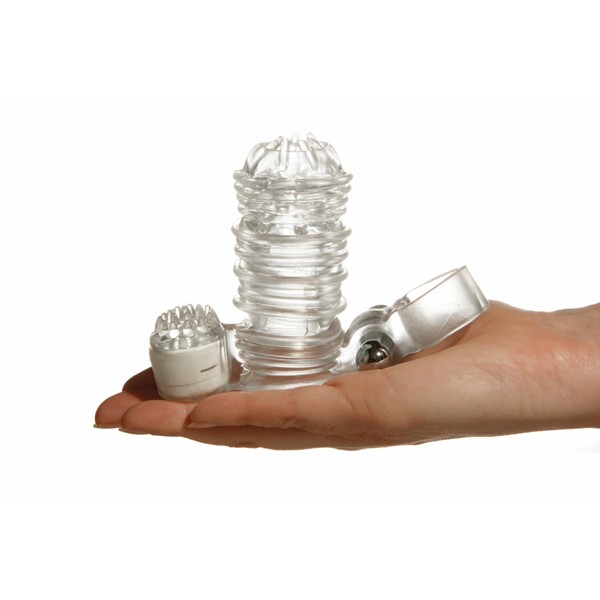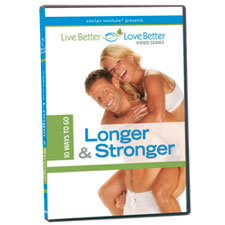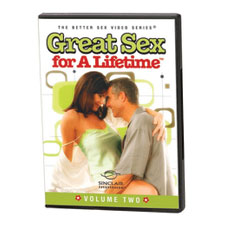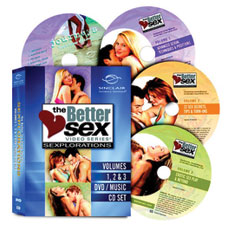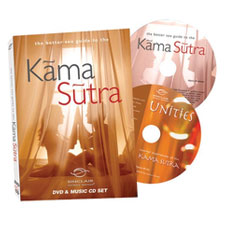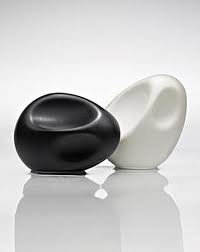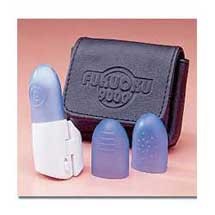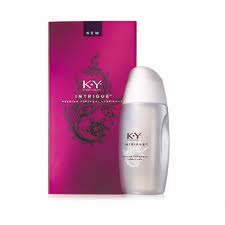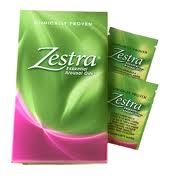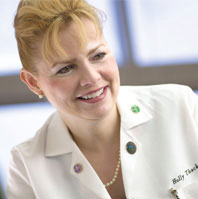{Meet the SEXpert} Wendy Strgar
After experiencing severe physical reactions to mass-market sexual aid products, FOF Wendy Strgar set out to create her own. The products she developed “saved her marriage,” Wendy says. Now, she’s taken her rescue mission mainstream. Her product line, Good Clean Love, is available in stores including Whole Foods, Pharmaca and Fred Meyer, and features lotions, oils and body “candy” that is free of parabens, petrochemicals and glycerin. “When we give our samples away, I often tell customers not to waste them on someone they don’t love,” says Wendy. She’s completely serious.
FOF talks to Wendy about her life and loves.
Tell us a little about your background
I’m 51. I grew up on Long Island, NY, the middle child between an older sister and younger brother. My father was in sales, then real estate development. My mother was a home economics teacher. They divorced when I was in 8th grade, the first couple to divorce in our community. My unhappy family was a primary inspiration for me to figure out how to make relationships work.
Please expand on that last thought.
I learned in college about the huge abyss between kids who had families at their backs and those who didn’t. When I went away to Gettysburg College I thought everyone would be on level ground, but realized that kids who are loved and connected to their families have their support even when they’re away from them. I finished my Bachelors degree at the University of Minnesota and also earned my Masters there.
Married? Kids?
I just celebrated my 29th anniversary. I met my husband, Franc, on a college trip to Minnesota when I was 19. I immediately knew he was the man I was waiting for. It scared him a little when I told him, after only two weeks, that we would get married. My husband is a psychiatrist. Besides his own practice, he provides services to organizations that support kids in our community. We have four children, aged 15 to 24, who all still live at home. Our two daughters and two sons are, without question, the best things I have done with my life and it such a joy to witness their friendships as they grow. Dinnertime is full of stories and surprises and I cherish these last months, knowing they will soon all be on their way. When they were little, I never let them go to bed angry with one other. Now, they’re present for each other and good friends.
What did you do following graduation?
I‘ve been an entrepreneur since I graduated. After creating and leading a language camp for kids, I started a business doing market research and sales for high-end French home products. Living in France for three years, during and after college, was a formative and memorable time. After the French franc dropped 30 percent in a month, and I closed the business, I went back to school for my Masters degree in organizational development. I had my first child just before I finished my thesis.
What brought you to Eugene, OR?
My husband’s medical training took us to different places for 10 years. He started his private practice here, where there was a need for more psychiatrists. It’s a beautiful and affordable place to live. The beach here is an untapped wonder.
Why and when did you launch Good, Clean, Love?
I launched the company in the fall of 2003, although it wasn’t called Good Clean Love for a few years. I started the business to answer a personal need in my own marriage, after having severe physical reactions to the standard sexual aid products available in drug and adult stores. I needed products that would allow me to keep up the lovemaking that was the glue in my marriage after four kids. GCL was created to provide healthy alternatives to the products that are filled with petrochemicals and parabens. My business saved my marriage because our products (that I have formulated over the years) give me a natural aphrodisiac boost through scent – and help me remember the lover in me. Our personal lubricants simulate the moisture I used to have when I was young. In fact, I feel youngest when I make love with my husband. As we started experimenting with my love products, I also learned that the more I physically loved my husband, the more loving he became.
[Enter to test a sampler kit of Wendy’s Good Clean Love products!]
What’s the significance of the name Good Clean Love?
We went through several name changes over the years. The products were originally called ‘sacred moments’ because I believe making love to someone who loves you deeply is a path to the divine… that didn’t work too well in the market place. Then we tried naked scents, but that was a little too adult for mainstream. Then we went with our original corporate name Good Clean Fun. Soon after we spent thousands of dollars on labels we had a trademark infringement suit. Good Clean Love turned out to be the best name yet. I always say the fun is right behind the love. We met our genius designer, who created our logo and brand, in 2010. I want our products to always be associated with the kind of lovemaking that makes you feel more loving, more loveable and whole. When we give our samples away, I often tell customers not to waste them on someone they don’t love.
What are three overwhelming boomer attitudes about sex that they should change and why?
There is so much misinformation about sex in our culture and real discussions and education about sex are still missing for so many people.. If you didn’t learn about sex when you were young, many people are still holding onto beliefs and myths about sexuality that prevent them from exploring their natural curiosity. Not uncommonly, people are afraid to ask for what they want, and even more afraid to enter into the open and vulnerable space that is the precursor to passion and orgasm. Here are three ideas to get you started thinking differently:
Learn more. Curiosity and wonder need to replace shame and judgment when it comes to human sexuality. These positive-thinking attributes can go a long way in encouraging a continuously evolving sexual mind set and healthier relationships. When you see yourself judging other people’s sexual choices and preferences – it is a good time to look at your own sexual questions.
Turn judgments into questions about yourself. The quest for a specific kind of sex, or the belief that there is only one kind of sex that works, is a dead end on so many levels. When we approach sex with a specific end goal in mind, we lose sight of the process. We forget how to use all of our senses to bring us fully into the moment.
Be present. Focus on your immediate experience and add sensual stimulus to wake up your senses of smell and touch. Don’t be in a hurry to get somewhere, savor each moment for as long as you can.
What’s your personal attitude about sex?
Sex is one of my greatest teachers and I believe it has the power to deeply heal and transform your relationship to yourself, your partner and even to the divine. There is no better moment of the week than the crazy abandonment I feel when I make love with my husband. We’ve made love thousands of times over the three decades we’ve shared a bed, and while there are elements that are familiar, it never feels completely the same. Our sex life continues to surprise me, mostly because we let ourselves be vulnerable and open to experiencing the unexpected. After we’re done, we look and wonder in disbelief how it actually gets better every time.
I always think ‘Who was that woman?’ Somehow, it doesn’t feel like me, the same me who shops and makes dinner and all the rest of it. I feel like I’m meeting multiple versions of me who get set free. Orgasmic release is a total system reset. There is little else at our disposal that calms, centers and energizes in quite the same way as orgasmic connection.
What are your greatest passions in life?
I’m pretty passionate about most of life. My husband and kids are the universe that define my sense of belonging and safety, but I am lucky to love my work and also to have daily practices that I work at to keep me positive. I love to walk in nature and smell the changes of season. I love to write because I learn what I think, I love to stand up and teach about love and positivity. I love to meditate and feel energy move through me. I love to prepare and eat food and taste new things. I love to love!
What’s the most romantic place you’ve visited?
Hawaii is one of my favorite places on earth. We’ve had the blessed luck to visit as a family many times and the warm ocean has been a beautiful and healing soup for our family. I haven’t taken very many trips with my husband alone, but it was romantic just the same to be in tropical locations, even with our kids. Now, warm beaches mean family time.
I’m also planning a trip to Costa Rica, which is called one of the ‘happiest countries in the world.’
Name some of the things that put you in a romantic mood
For one thing, I think that our need for ‘romance’ can sometimes get in the way. If we’re too committed to what it must look like before we get intimate, it could actually block intimacy. That said, I always light candles, play favorite music and use sensuous love products. I’m also a believer in lingerie, because when we dress the part, it’s easier for us to let loose into a new space. We’ve always had to plan our sex dates, since our kids were usually around, but that’s romantic for me because I like to anticipate the intimacy. I also get a lot of free erotica to review and I like to peruse some of the stories that I’d never have the nerve to write. It’s remarkable how easy it is to let suggestions tap a sexual nerve. Food also can be really romantic, whether it’s preparing it together or sharing some exotic flavors. I also love to bathe with my husband, which can be very sexy.
Name things that kill romance
How we think can kill romance faster than anything else. Unfulfilled expectations can turn into all kinds of unromantic encounters. Likewise, if we have doubts, fears or shame about our bodies or sex itself, then we end up leaving out so many potential ways we could connect. Our brains can’t process those emotions at the same time they’re creating passion and orgasm so unspoken feelings are not romantic. Lastly, I think that distraction kills romance. What we all want most is for our partner to be fully present, listening and looking in our eyes. Digital toys, for example, take us away from that.
What’s more important, if you could only have one: A great companion or great sex?
I don’t think I can answer this because I believe that great sex creates the glue for great companionship, and having a great companion creates the safety and space to explore our sexual selves. Even for couples with medical issues that inhibit or change their sexual rapport, it’s really important to remember that sex begins in the brain, not in the genitals. There are many sweet, sexy ways you can interact with someone that don’t necessarily include intercourse.










